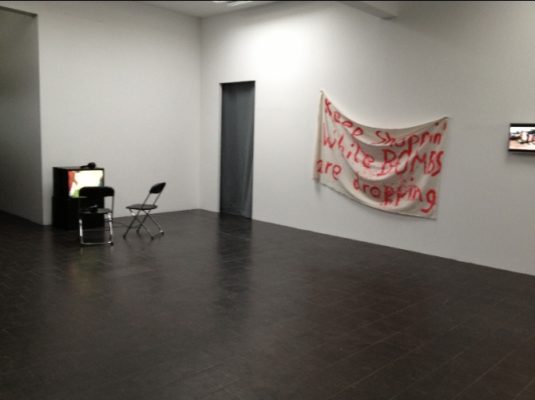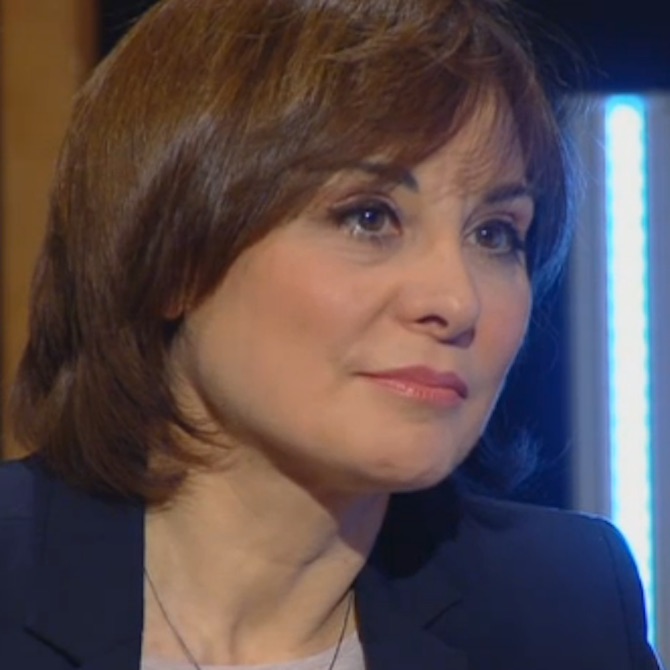Search
To search for an exact match, type the word or phrase you want in quotation marks.
A*DESK has been offering since 2002 contents about criticism and contemporary art. A*DESK has become consolidated thanks to all those who have believed in the project, all those who have followed us, debating, participating and collaborating. Many people have collaborated with A*DESK, and continue to do so. Their efforts, knowledge and belief in the project are what make it grow internationally. At A*DESK we have also generated work for over one hundred professionals in culture, from small collaborations with reviews and classes, to more prolonged and intense collaborations.
At A*DESK we believe in the need for free and universal access to culture and knowledge. We want to carry on being independent, remaining open to more ideas and opinions. If you believe in A*DESK, we need your backing to be able to continue. You can now participate in the project by supporting it. You can choose how much you want to contribute to the project.
You can decide how much you want to bring to the project.

The history of Temporary Gallery in Köln is a curious one. It was established in 2008, on the initiative of the gallerists Thomas Rehbein and Christian Nagel as a space that, having previously paid the rent galleries from all across the world could use to have a presence in Köln. This need to activate the gallery scene of the city was fruit of Koln’s diminishing role in the art world during the eighties and the nineties, due amongst other reasons to the new capital status, not just political but also creative, assumed by Berlin. But Köln was not as sexy as before and the idea of the Temporary Gallery only functioned for a limited time. In 2012, the project changed direction and transformed into a non-profit space dedicated to the research and presentation of contemporary art projects. Directed by Regina Barunke, Temporary Gallery has been offering for a year now a programme that stands out for its collaboration with international curators and also for a certain inclination towards cinematographic formats and references.
This is the case of Roll Over. Reflections on documentary, after Richard Leacock, a group show curated by Bianca Visser, which stemming from the work of the British filmmaker Richard Leacock (1921-2011) investigates to what extent his ideas and contributions regarding the documentary genre have been continued or rejected by contemporary artists. In other words, at a time when contemporary artists approach, use, gobble up or dissect the documentary format, to what extent are the technical and conceptual achievements of a documentary filmmaker like Leacock still valid in the artistic field?
Bianca Visser resolves the dilemma not through grand theoretical digressions so much as by simply causing a few films by Leacock to coexist alongside works by seven contemporary artists: Yto Barrada, Duncan Campbell, Jan Dietvorst/Roy Villevoye, Luke Fowler, Anna McLauchlan, Fernando Sánchez Castillo and Hirofumi Suda. Projections and monitors alternate in a restrained staging that without deploying sophisticated technical devices offers the necessary conditions to look at (and listen to) the works in a very suitable fashion.
Richard Leacock’s maximum aspiration was to get as close to reality as possible and for this, at the end of the fifties, he dreamt up a mechanism to synchronize image and sound, or to put it another way, he invented a silent portable device that enabled him to move around unnoticed, recording everything that was occurring. His invention, that was made reality by his associates Robert Drew and Otto Koppelka, made it possible from that moment to move freely through streets and places and record them in a spontaneous manner. Hence the name “direct cinema”. The aim was that film would be able to transmit to the spectator a feeling of being there.
For Roll Over, Visser has selected three works that aren’t the most well known by Leacock, but for this it’s relevant to show them: Hickory Hill (1968), shows the annual pet show in the Kennedy’s residence, that left the president’s dog in a rather uncomfortable situation on seeing how other dogs, cats, birds or hamsters occupied his usual space; Community of Praise (1981), is a portrait of an average family from deep America. Throughout the film their religiosity gains importance, accompanied by superstitions and fanatical rituals. The third of the documentaries projected is Maidstone (1970), recorded during the filming of a film with the same title, written and directed by Norman Mailer, for which Leacock was a cameraman. Maidstone begins with a relaxed country scene that takes a strange turn, developing into a fight between Mailer and one of his actors. Suddenly, fiction and reality intermingle, the names of the characters are no longer used and the blood, flowing from flowing from one of their ears, is totally real.
Fernando Sánchez Castillo also comes across a situation and films it with his iPhone. During his visit to Documenta last summer his attention was drawn to one of the banners unfurled by the collective Occupy Kassel, “Keep shopping while bombs are dropping”, he decides to buy the banner and film the negotiations of this process. It’s a minimal scene that suddenly evidences the contradictions between good intentions and much more prosaic needs.
“Being there”, filming in a free and spontaneous manner, what is left of all this? A fair amount, in the case of Jan Dietvorst and Roy Villevoye, when in After the Battle (2012) they interview an historian focussed on the battles that took place in Verdun during the First World War, who dedicates his time to gathering, conserving and ordering each relic and clue that he finds (from bottles to helmets) to remember a series of fairly irrelevant battles that took place in that place.
Luke Fowler and Anna McLauchlan set out to film the short journey that goes from their apartment to the street. A priori neither complicated nor laborious, but it becomes almost impossible when the capturing of each one of the steps and all the details transforms it into something almost obsessive. In Hand-Me Downs (2011), Yto Barrada takes homemade material filmed with Super 8 and 16 mm, bought at flea markets and incorporates small stories about the memory of his own family in Morocco. The freedom that Leacock advocated is total in the case of Hirofumi Suda, who records everything that captures his attention, in a way that creates a selection of images unconnected by any narrative thread, but with a capacity to inspire an infinity of stories.
As a counterpoint, Duncan Campbell in Make it new John (2009) works basically with found material, although he has no qualms about adding the odd scene that he has filmed, to reconstruct a story: that of the entrepreneur John DeLorean who thought up a double plan: to create a futurist automobile which manufactured in Ireland, could –in passing- serve to resolve the political and social conflicts. A fantastic film that only uses the documentary conventions that interest him and in which he has no qualms in taking all the artistic licence he needs. Far from Leacock, but for that alone, it is highly significant in this context.

In this way, and without forcing the confrontations, Roll Over explores “the documentary trend in contemporary art”, but without any desire to generalize so much as analyse a very specific case: the impact of one of the pioneers of the genre on some artists working today. We don’t know if Leacock is a reference for the artists that Bianca Visser has selected, but what is evident is how naturally the logic of facts and the logic of fiction are constantly confused. Jacques Rancière already said a while ago: “writing history and writing stories come under the same regime of truth”.

Montse Badia has never liked standing still, so she has always thought about travelling, entering into relation with other contexts, distancing herself, to be able to think more clearly about the world. The critique of art and curating have been a way of putting into practice her conviction about the need for critical thought, for idiosyncrasies and individual stances. How, if not, can we question the standardisation to which we are being subjected?
www.montsebadia.net
"A desk is a dangerous place from which to watch the world" (John Le Carré)